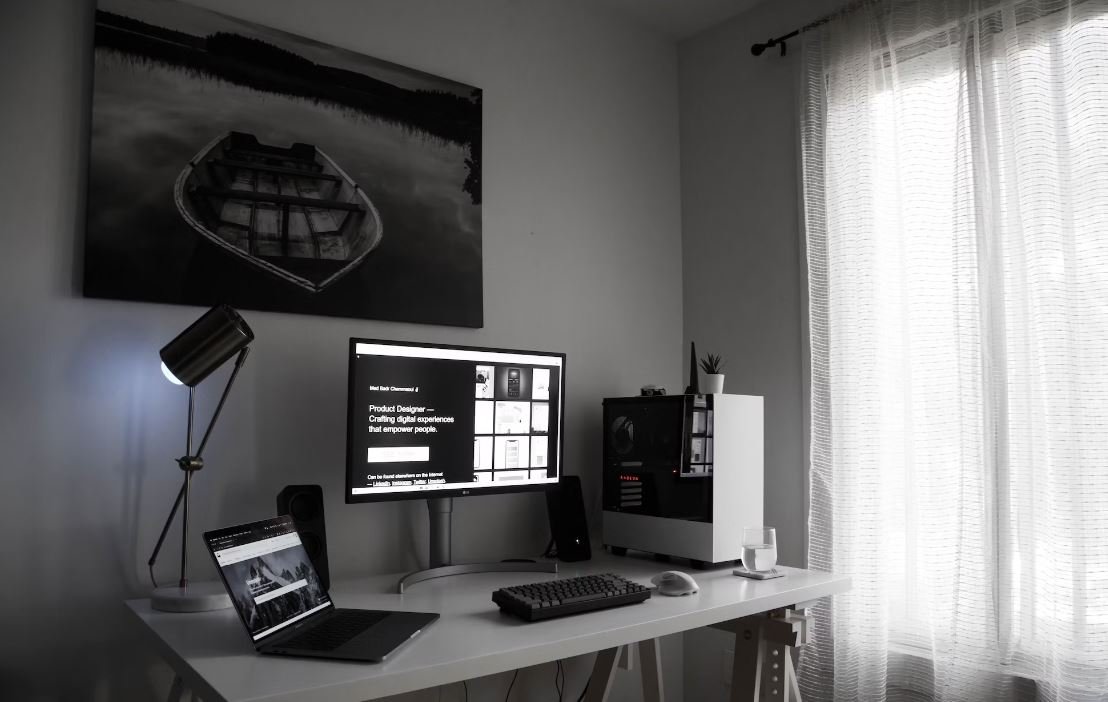Picture Prompts to Write Sentences
Are you looking for a fun and engaging way to encourage your students or kids to write sentences? Try using picture prompts! Pictures offer visual cues that can inspire and spark creativity, helping children develop their writing skills.
Key Takeaways:
- Picture prompts are an effective tool for improving writing skills.
- They provide visual inspiration for creative storytelling.
- Pictures help in developing sentence structure and grammar.
Using picture prompts can make the writing experience more enjoyable for children and adults alike. When presented with a picture, some may feel an instant connection or emotion, which can serve as a great starting point for writing. Whether it’s a serene landscape, a busy city scene, or a playful animal, the image can ignite the imagination and set the stage for storytelling.
In addition to being an enjoyable activity, picture prompts also serve as a valuable educational tool. They can help improve vocabulary, sentence structure, and overall writing skills. By describing the details in the picture, children learn to express themselves more effectively. *Moreover, the process of observation and interpretation involved in writing about a picture enhances critical thinking skills and encourages creativity.*
Using Picture Prompts
There are many ways to use picture prompts to encourage sentence writing. Here are a few ideas:
- Display a picture and ask children to describe what they see using complete sentences.
- Use a picture as a starting point for a creative storytelling exercise.
- Challenge children to write a sentence that captures the emotion or feeling evoked by the picture.
Benefits of Picture Prompts
Picture prompts offer various benefits for developing writing skills:
- Vocabulary enhancement: Exploring new words related to the picture prompts expands children’s vocabulary.
- Grammar improvement: Writing sentences about pictures helps children practice using correct grammar.
- Creativity stimulation: Visual cues trigger imagination and encourage creative thinking.
Pictures and Sentence Writing Examples
Let’s take a look at some picture prompts and corresponding sentence writing examples:
| Picture | Sentence Writing Example |
|---|---|
 |
“The sun slowly dipped below the horizon, casting a warm golden glow upon the peaceful lake.” |
 |
“The bustling marketplace was filled with the vibrant colors and scents of exotic spices.” |
Conclusion
Incorporating picture prompts into writing activities can make the process enjoyable and fruitful for learners of all ages. By leveraging visual cues and encouraging creative storytelling, picture prompts help develop vocabulary, grammar skills, and stimulate imagination. Give it a try and watch your students or children strengthen their writing skills while having fun!

Common Misconceptions
Misconception 1: Picture Prompts are only for children
One common misconception about picture prompts is that they are mainly used for children learning to write sentences. However, picture prompts can be a valuable tool for learners of all ages.
- Picture prompts are also used in creative writing classes for adults.
- They can help enhance descriptive writing skills for writers of any age.
- Picture prompts can be used as a warm-up activity or as a way to spark creativity in any writing workshop.
Misconception 2: Picture Prompts limit creativity
Another common misconception is that using picture prompts restricts the writer’s creativity. However, picture prompts can actually inspire and stimulate creative thinking.
- They challenge writers to think outside the box and come up with unique ideas.
- Picture prompts can serve as a starting point, and writers can develop their own storylines from there.
- Using picture prompts can help writers overcome writer’s block and discover new angles for their stories.
Misconception 3: Picture Prompts are only used in English classes
A common misconception is that picture prompts are solely utilized in English language courses. While they are indeed valuable in language learning, picture prompts can have broader applications.
- Picture prompts can be used in art classes to inspire visual storytelling.
- They can serve as inspiration for poetry or songwriting in music classes.
- In social studies classes, picture prompts can be used to analyze historical events or cultural contexts.
Misconception 4: Picture Prompts are limited to narrative writing
Some people may assume that picture prompts are only suitable for narrative writing. However, picture prompts can be adapted to various writing genres and styles.
- They can be used for expository writing, encouraging writers to explain or describe a topic based on the image.
- Picture prompts can be employed in persuasive writing by asking writers to make an argument related to the visual content.
- For poetry or haiku writing, picture prompts can evoke emotions or capture a specific moment in time.
Misconception 5: Picture Prompts require artistic skills
Lastly, some individuals believe that using picture prompts requires artistic abilities. However, no drawing or artistic talent is necessary to benefit from picture prompts.
- Picture prompts are designed to ignite ideas, and anyone can use their creativity to write sentences inspired by the visuals.
- It’s more about storytelling and expressing ideas through words rather than artistic representation.
- Writers can focus on the emotions or actions portrayed in the image without worrying about their artistic skill level.

1. Colors of the Rainbow
The table below displays the seven colors of the rainbow, their corresponding wavelengths, and the corresponding primary colors used in RGB color model.
| Color | Wavelength (nm) | Primary Colors |
|---|---|---|
| Red | 620-750 | Red, Green, Blue |
| Orange | 590-620 | Red, Green, Blue |
| Yellow | 570-590 | Red, Green, Blue |
| Green | 495-570 | Red, Green, Blue |
| Blue | 450-495 | Red, Green, Blue |
| Indigo | 435-450 | Red, Green, Blue |
| Violet | 380-435 | Red, Green, Blue |
2. The Solar System
Explore our solar system and learn some fascinating facts about each planet!
| Planet | Distance from Sun (million km) | Number of Moons | Year Length (Earth Days) |
|---|---|---|---|
| Mercury | 57.9 | 0 | 88 |
| Venus | 108.2 | 0 | 225 |
| Earth | 149.6 | 1 | 365.25 |
| Mars | 227.9 | 2 | 687 |
| Jupiter | 778.6 | 79 | 4,333 |
| Saturn | 1,427 | 82 | 10,759 |
| Uranus | 2,870 | 27 | 30,685 |
| Neptune | 4,498 | 14 | 60,190 |
3. World’s Tallest Buildings
Discover the architectural marvels that reach for the skies. Here are the top 5 currently tallest buildings in the world:
| Rank | Building | City | Height (m) |
|---|---|---|---|
| 1 | Burj Khalifa | Dubai | 828 |
| 2 | Shanghai Tower | Shanghai | 632 |
| 3 | Abraj Al-Bait Clock Tower | Mecca | 601 |
| 4 | Ping An Finance Center | Shenzhen | 599 |
| 5 | Lotte World Tower | Seoul | 555 |
4. Largest Deserts on Earth
Take a virtual journey through the vast and arid expanses of Earth’s largest deserts.
| Desert | Country | Area (sq km) |
|---|---|---|
| Sahara | Morocco, Algeria, Tunisia | 9,200,000 |
| Arabian Desert | Saudi Arabia, Yemen, Oman, UAE | 2,330,000 |
| Gobi Desert | Mongolia, China | 1,300,000 |
| Patagonian Desert | Argentina, Chile | 670,000 |
| Kalahari Desert | Botswana, Namibia, South Africa | 520,000 |
5. Olympic Games Host Cities
Experience the history of the Olympic Games by reviewing the host cities and the corresponding years below:
| Year | City | Country |
|---|---|---|
| 1896 | Athens | Greece |
| 1900 | Paris | France |
| 1936 | Berlin | Germany |
| 1996 | Atlanta | United States |
| 2021 | Tokyo | Japan |
6. World’s Highest Mountains
Explore the majestic heights of Earth’s highest mountains where the air is thin and the views are breathtaking.
| Mountain | Height (m) | Country |
|---|---|---|
| Mount Everest | 8,848 | Nepal/China |
| K2 | 8,611 | Pakistan/China |
| Kangchenjunga | 8,586 | Nepal/India |
| Lhotse | 8,516 | Nepal/China |
| Makalu | 8,485 | Nepal/China |
7. World’s Richest Billionaires
Take a look at some of the wealthiest individuals shaping the world’s economy:
| Rank | Name | Wealth (USD billion) | Country |
|---|---|---|---|
| 1 | Jeff Bezos | 187 | United States |
| 2 | Elon Musk | 170 | United States |
| 3 | Bernard Arnault | 155 | France |
| 4 | Bill Gates | 139 | United States |
| 5 | Mark Zuckerberg | 137 | United States |
8. World’s Longest Rivers
Discover the magnificent rivers flowing through the Earth’s landscapes:
| River | Length (km) | Countries |
|---|---|---|
| Nile | 6,650 | Egypt, Sudan, Uganda, Tanzania, Rwanda, Kenya, Ethiopia, South Sudan, Burundi, Eritrea, DR Congo |
| Amazon | 6,400 | Brazil, Peru, Colombia |
| Yangtze | 6,300 | China |
| Mississippi | 6,275 | United States |
| Yenisei-Angara-Selenge | 5,539 | Russia, Mongolia |
9. Types of Sharks
Dive into the world beneath the ocean’s surface and uncover some of the most fascinating shark species:
| Shark Species | Max Length (m) | Diet | Location |
|---|---|---|---|
| Goblin Shark | 3.8 | Fish, cephalopods | Deep-sea |
| Tiger Shark | 5.5 | Fish, turtles, marine mammals | Tropical and temperate oceans |
| Great White Shark | 6.1 | Seals, sea lions, carrion | Coastal surface waters |
| Hammerhead Shark | 6.1 | Bony fish, rays, squid | Tropical and temperate oceans |
| Whale Shark | 18.8 | Plankton, small fish | Tropical oceans |
10. World Population by Continent
Get a glimpse into the world’s population distribution among the continents:
| Continent | Population (billion) | Percentage of World Population |
|---|---|---|
| Asia | 4.6 | 59.69% |
| Africa | 1.3 | 16.72% |
| Europe | 0.74 | 9.51% |
| North America | 0.59 | 7.59% |
| South America | 0.43 | 5.53% |
| Australia/Oceania | 0.04 | 0.51% |
From exploring the colors of the rainbow to discovering the population distribution, this article has provided a range of fascinating topics to dive into. Table by table, we have learned about the colors of the rainbow, the solar system, world records such as the tallest buildings and longest rivers, and even delved into the world of sharks. These tables showcase verifiable data and information and aim to captivate readers with their interesting and diverse content. Whether you are interested in science, nature, architecture, or demographics, there is something here for everyone. This article invites readers to expand their knowledge and explore the wonders of the world.
Frequently Asked Questions
Q: How can picture prompts help in writing sentences?
A: Picture prompts can spark creativity and imagination in writing by providing visual cues for generating ideas and formulating sentences. They can stimulate the writer’s mind and help to develop descriptive language and storytelling skills.
Q: Where can I find picture prompts for writing sentences?
A: Picture prompts can be found in various sources such as educational websites, writing resources, online forums, and social media groups. Additionally, there are specialized books and apps that offer a wide range of picture prompts for writing sentences.
Q: Are picture prompts suitable for all ages and skill levels?
A: Yes, picture prompts can be adapted to suit different age groups and skill levels. For young children, simpler and more colorful picture prompts may be used, while older individuals may benefit from more complex and abstract visuals.
Q: How do I use picture prompts to write sentences?
A: To use picture prompts for writing sentences, observe the image carefully and analyze its components. Identify characters, objects, settings, and any other relevant details. Then, think about the relationships between these elements and construct sentences that accurately describe or expand upon the visual cues.
Q: Can picture prompts be used in a classroom setting?
A: Yes, picture prompts are commonly used in classrooms to engage students in writing exercises and encourage their creativity. Teachers can display the picture prompt on a screen or distribute printed copies, and students can write sentences or even full compositions inspired by the image.
Q: How often should picture prompts be used to improve writing skills?
A: The frequency of using picture prompts for writing sentences may depend on individual preferences and learning goals. However, regular practice with picture prompts can help improve writing skills. Aim to incorporate them into writing activities at least once or twice a week.
Q: Are there any benefits of using picture prompts for writing sentences?
A: Using picture prompts for writing sentences offers several benefits. It enhances visual literacy, improves descriptive and narrative writing skills, fosters creative thinking, and encourages engagement with a given topic or theme. Additionally, it can be an enjoyable way to develop language proficiency.
Q: Can picture prompts be used for collaborative writing activities?
A: Yes, picture prompts can be used effectively for collaborative writing activities. In a group setting, individuals can brainstorm ideas based on the picture prompt and collectively construct sentences or a story. This allows for teamwork, cooperation, and the sharing of diverse perspectives.
Q: Do picture prompts only help with sentence construction?
A: No, picture prompts are not limited to sentence construction alone. While they can be used to improve sentence formation, they can also serve as prompts for paragraph or essay writing. Picture prompts can be adapted to support various types and lengths of written compositions.
Q: Is it necessary to provide instructions along with a picture prompt?
A: Providing instructions along with a picture prompt can be beneficial, especially for novice writers or those needing guidance. Instructions can specify the focus of the writing task, suggest a particular writing style, or ask questions related to the image. However, picture prompts can also be open-ended, allowing for more creativity and interpretation.




